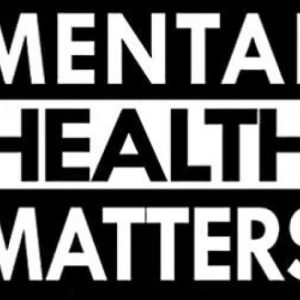Last Updated on July 29, 2025
Pregnancy ought to be one of the most exciting and joyful experiences in life. Unfortunately, maternal and infant health outcomes are getting worse in the United States. Rates of complications are rising, and while the causes are complex, one key factor is the increase in hypertensive disorders during pregnancy. These conditions can lead to severe outcomes, especially when they go undiagnosed or untreated.
One of the most serious of these conditions is preeclampsia. It affects thousands of pregnant individuals each year, often with little warning. But there is a simple, evidence-based intervention that can help reduce the risk for those most vulnerable: low-dose aspirin.
In this article, we’ll take a closer look at preeclampsia, who is at high risk, how low-dose aspirin works as a preventive measure, and how a national awareness campaign is working to close the gap in knowledge and care.
What is Preeclampsia?
Preeclampsia is a serious and potentially life-threatening condition that can develop during pregnancy, usually after the 20th week and up to six weeks after delivery. It falls under the category of hypertensive disorders of pregnancy (HDP), a group of complications caused by high blood pressure during pregnancy. These conditions are becoming more common across the United States, with alarming key figures:
- Preeclampsia occurs in approximately 5 to 7 percent of pregnancies.
- Black women are about 60 percent more likely to develop preeclampsia than white counterparts.
- High blood pressure is found in about about 1 in every 12 to 17 pregnancies.
Preeclampsia can lead to serious complications involving major organs such as the brain, kidneys, and liver. If not diagnosed and managed in time, it can result in stroke, blood clots, or even death.
Because the most effective treatment for preeclampsia is delivery, it is also a leading contributor to rising preterm birth rates. When the condition worsens, healthcare providers may recommend early childbirth to protect the health of both the pregnant individual and the baby.
Understanding who is at risk and recognizing early warning signs can help prevent severe outcomes and support healthier pregnancies for everyone.
What Are the Signs and Symptoms of Preeclampsia?
During routine prenatal care, providers monitor for key warning signs like high blood pressure and protein in the urine, which are two early indicators of preeclampsia. But in some cases, other symptoms may also appear, including:
- Changes in vision such as blurriness, flashing lights, spots, or light sensitivity
- A headache that doesn’t go away
- Nausea, vomiting, or dizziness
- Pain in the upper right belly or shoulder
- Sudden weight gain (2 to 5 pounds in a week)
- Swelling in the face, hands, or legs
- Shortness of breath or difficulty breathing
If you notice any of these symptoms, contact your healthcare provider right away. It’s also important to attend all scheduled prenatal appointments, since preeclampsia can develop without obvious symptoms.
All of this might sound scary, and it can be. But research has found an incredible tool that may prevent preeclampsia or, at least, decrease its severity, and it’s something many of us are already familiar with: low-dose aspirin (also called baby aspirin).
Who Is Considered High-Risk for Preeclampsia?
You may be considered high-risk if you’ve had preeclampsia in a previous pregnancy, are pregnant with multiples, or have certain chronic health conditions such as high blood pressure, diabetes, kidney disease, or an autoimmune disorder.
Other risk factors include:
- A family history of preeclampsia
- Being age 35 or older
- Conceiving through in vitro fertilization (IVF)
Social and structural factors also play a role. Financial hardship, lack of health insurance, and being African American or Black are all associated with increased risk. This is not due to race itself, but to long-standing inequities in healthcare access, exposure to chronic stress, and the impact of systemic racism.
Low-dose aspirin has been shown to help reduce the risk and severity of preeclampsia in people who are considered high-risk. If you fall into one of these categories, your healthcare provider may recommend starting a daily low-dose aspirin during pregnancy.
How You Can Help Spread Awareness
Although low-dose aspirin is a simple, low-cost intervention, it remains significantly underused in pregnancy care. Several factors contribute to this gap. Some healthcare providers and pharmacists may lack training or up-to-date information, leading to hesitation in recommending it. Concerns about potential side effects, cultural or language barriers that hinder communication, and uncertainty around how to take it correctly can also limit its use.
To help address these challenges, March of Dimes launched the Low Dose, Big Benefits™ campaign in May 2024. The initiative aims to reduce the risks of preeclampsia and preterm birth by increasing awareness and appropriate use of low-dose aspirin. Through national and local partnerships, the campaign provides educational outreach and tools for both providers and patients.
As part of the campaign, we have developed a toolkit for both healthcare providers and patients full of print and digital resources and awareness-raising materials. We also recommend our preeclampsia risk factors worksheet, which patients and providers can fill out together to determine their risk level.
Talk to Your Provider Before Starting Low-Dose Aspirin
While low-dose aspirin can be a valuable tool for preventing preeclampsia in high-risk pregnancies, it’s not right for everyone. It’s essential to speak with your healthcare provider before starting it. They can help determine whether it’s appropriate based on your medical history and risk factors.
If prescribed, take low-dose aspirin exactly as directed. Do not take more than the recommended dose, and don’t take it more often than advised. Following your provider’s guidance is the safest and most effective way to protect your health and your pregnancy.





